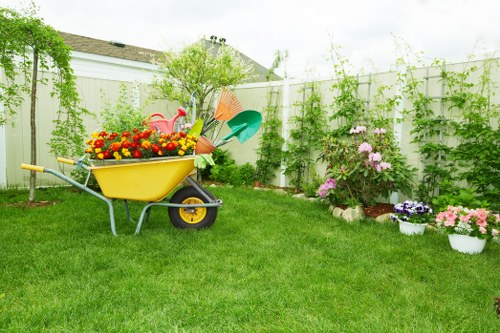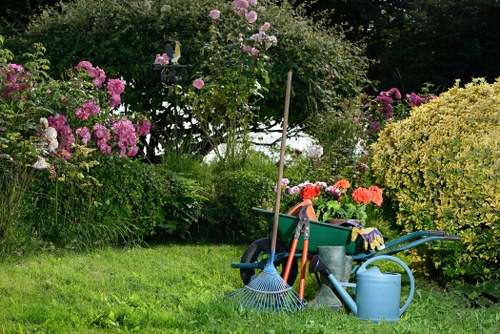Patio Cleaning Hook: The Ultimate Guide to a Sparkling Exterior

Maintaining a clean patio not only enhances the beauty of your home but also extends the life of your outdoor space. A patio cleaning hook is an essential tool that simplifies the cleaning process, making it more efficient and effective.
Whether you have a wooden deck, concrete patio, or stone surface, regular cleaning helps prevent the buildup of dirt, algae, and grime. This guide will provide you with everything you need to know about using patio cleaning hooks to keep your outdoor area pristine.
In this comprehensive article, we will explore the benefits of patio cleaning hooks, how to choose the right one, step-by-step cleaning instructions, and tips for maintaining your patio between cleanings.
Why a Clean Patio Matters

A clean patio significantly contributes to the overall appearance of your home. It creates a welcoming environment for family gatherings, outdoor dining, and relaxation. Moreover, a well-maintained patio can increase the value of your property.
Regular cleaning prevents the accumulation of harmful substances that can damage the surface of your patio. For instance, mold and mildew not only make your patio look unappealing but can also degrade wooden surfaces over time.
Additionally, a clean patio ensures safety by eliminating slippery surfaces caused by algae or moss, reducing the risk of accidents during wet conditions.
Benefits of Regular Patio Cleaning
- Enhances curb appeal
- Prevents structural damage
- Increases property value
- Ensures safety by removing slippery substances
- Makes outdoor spaces more enjoyable
Choosing the Right Patio Cleaning Hook

Selecting the appropriate patio cleaning hook is crucial for achieving the best results. Consider factors such as the type of patio surface, the severity of stains, and the durability of the tool.
Patio cleaning hooks come in various materials, including stainless steel and plastic. Stainless steel hooks are more durable and suitable for heavy-duty cleaning, while plastic hooks are lightweight and ideal for less intensive tasks.
Additionally, ergonomic designs can reduce fatigue during extended cleaning sessions, making the process more manageable and efficient.
Features to Look For
- Durable materials
- Ergonomic handle
- Adjustable length
- Compatibility with various cleaning solutions
- Rust-resistant coating
Top Materials for Durability
When selecting a patio cleaning hook, it's essential to choose one made from high-quality materials. Stainless steel hooks are preferred for their resistance to rust and corrosion, ensuring longevity even after frequent use.
Plastic hooks are lightweight and affordable but may not withstand harsh cleaning chemicals or heavy-duty scrubbing. For optimal durability, stainless steel is the recommended choice.
Step-by-Step Guide to Cleaning Your Patio with a Hook

Cleaning your patio can seem like a daunting task, but with the right tools and techniques, it becomes manageable. Follow these steps to achieve a spotless patio using a patio cleaning hook.
Step 1: Gather Your Tools
- Patio cleaning hook
- Broom or leaf blower
- Garden hose or pressure washer
- Cleaning solution
- Protective gloves
Ensuring you have all necessary tools before starting will streamline the cleaning process and prevent unnecessary interruptions.
Preparing Your Tools
Begin by assembling all your cleaning tools. Wearing protective gloves is recommended to safeguard your hands from harsh chemicals and debris.
Removing Debris and Dirt
Use a broom or leaf blower to clear away loose dirt, leaves, and other debris from your patio. This step is crucial to prevent scratching the surface during the cleaning process.
Applying the Cleaning Solution
Mix an appropriate cleaning solution based on your patio material. For wooden patios, a mild soap solution works best, while concrete or stone surfaces may require more robust cleaners.
Scrubbing Techniques
Attach the patio cleaning hook to your cleaning brush or tool. Scrub the surface in a circular motion, focusing on heavily stained areas. The hook helps to maintain pressure and ensures thorough cleaning.
Rinsing Your Patio
After scrubbing, rinse your patio thoroughly with water using a garden hose or pressure washer. Ensure all cleaning solution residues are removed to prevent slippery surfaces.
Maintaining Your Patio Between Cleanings

Regular maintenance can extend the time between deep cleanings and keep your patio looking its best. Implementing simple habits can make a significant difference.
Weekly sweeping removes surface debris, while seasonal checks can help identify and address potential issues early on.
Using protective sealants on wooden or stone patios can also provide an extra layer of defense against stains and moisture damage.
Regular Sweeping Tips
Invest in a high-quality broom with stiff bristles to effectively remove dirt and leaves from your patio surface. Sweep regularly to prevent buildup that can lead to more stubborn stains.
Preventing Mold and Mildew
Ensure proper drainage around your patio to prevent moisture accumulation. In areas prone to dampness, consider using mold-resistant treatments to safeguard your patio materials.
Local Insights: Patio Cleaning in Hook and Its Surroundings
Living in Hook provides unique opportunities and challenges for patio maintenance. The local climate, with its mix of humidity and seasonal rains, necessitates regular cleaning to keep patios in top condition.
Here are some of the nearby areas where patio cleaning services are highly recommended:
- Browns Town: Known for its lush gardens, keeping patios clean is essential to complement the vibrant flora.
- North Hook: The humid climate requires frequent cleaning to prevent mold and mildew buildup.
- Church Hill: Historical homes in this area often feature stone patios that need gentle cleaning methods.
- South Hook: Proximity to the waterfront means dealing with salt and moisture-related stains.
- Westwood: A popular area for outdoor entertaining, maintaining a clean patio is crucial for hosting guests.
- East End: Sandy soils can contribute to grime buildup, making regular cleaning necessary.
- Parkview: Beautiful parks nearby mean patios are often adjacent to green spaces, requiring thorough cleaning.
- Lakeside: Water runoff from nearby lakes can lead to slippery patio surfaces.
- Riverside: Patios here are exposed to varying weather conditions, necessitating durable cleaning solutions.
- Maple Grove: Leaf fall in autumn makes regular sweeping essential to keep patios clean.
Common Mistakes to Avoid When Cleaning Your Patio
Even with the best intentions, certain mistakes can hinder your patio cleaning efforts. Being aware of these can save time and prevent damage.
Using Harsh Chemicals
Avoid using overly strong chemicals that can deteriorate patio materials. Instead, opt for gentle, eco-friendly cleaners that effectively remove dirt without causing harm.
Ignoring Safety Precautions
Always wear protective gear, such as gloves and safety goggles, to protect yourself from splashes and debris during the cleaning process.
Sustainable Patio Cleaning Practices
Adopting sustainable practices not only benefits the environment but also promotes healthier outdoor living spaces.
Eco-friendly Cleaners
Choose cleaning solutions made from natural ingredients. These are safer for both your family and the surrounding ecosystem.
Water Conservation Tips
Use a pressure washer efficiently by adjusting the water flow to minimize waste. Collect and reuse runoff water for gardening purposes whenever possible.
Hiring Professional Patio Cleaning Services
For those who prefer a hands-off approach, hiring professionals can ensure a thorough and effective clean. Professionals have access to specialized equipment and expertise to handle even the toughest stains.
When to Consider Professionals
If your patio has extensive staining, structural damage, or requires specialized cleaning techniques, it's time to call in the experts.
Choosing the Right Service
Look for reputable cleaning services with positive reviews and proper certifications. Ensure they use eco-friendly products and adhere to safety standards.
Frequently Asked Questions
- 1. How often should I clean my patio?
It's recommended to clean your patio at least twice a year, preferably in spring and fall. However, high-traffic areas may require more frequent cleaning.
- 2. Can I use bleach to clean my patio?
While bleach is effective in removing stains and mold, it can also damage certain materials. It's best to use bleach sparingly and opt for eco-friendly cleaners when possible.
- 3. What is the best time of day to clean my patio?
Cleaning in the early morning or late afternoon is ideal to avoid direct sunlight, which can cause cleaning solutions to dry too quickly and leave streaks.
- 4. How can I prevent my patio from getting slippery?
Regularly removing algae and mold, using anti-slip treatments, and ensuring proper drainage can help prevent slippery surfaces.
- 5. Are there eco-friendly patio cleaning options?
Yes, many eco-friendly cleaners use natural ingredients like vinegar and baking soda. These options are effective and safer for the environment.